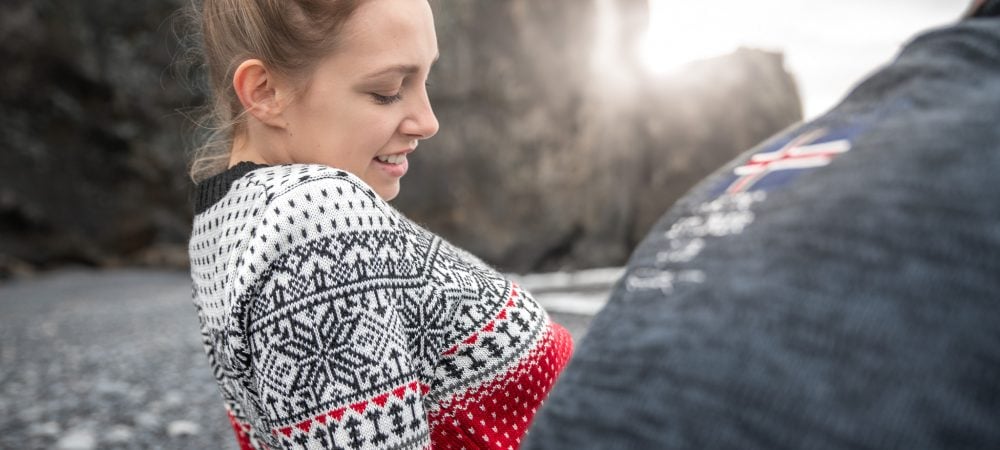On May 17th every year, Norway celebrates its Constitution Day as a commemoration of the signing of their constitution. On May 17, 1814, Norway declared independence from a previous union with Sweden.
Similar Independence Day celebrations around the world usually involve parades, fireworks, and military displays. In Norway, however, the event is marked by a day-long party with rounds of feasting and costume displays throughout the streets.
Norway National Day Celebrations
Many families, friends and neighbors gather each year for a National Day breakfast. Freshly baked bread is accompanied by eggs or smoked salmon (or whatever else the potluck yields).
By the time people take to the streets, traditional Norwegian wear like the colorful bunad can be seen on every corner. This classic Norwegian costume has several hundred variations, because colors and styles indicate the origin of each family line.
Children’s parades are led around the country with marching bands filling the streets with good cheer and familiar song. In Oslo, the largest of those parades is viewed by the royal family from the palace balcony while crowds wave Norwegian flags below.
National Day is an enormously popular holiday in Norway, especially among children, who seemingly eat their weight in hot dogs and ice cream.
Norway’s Connection to Iceland
Norway and Iceland are both Nordic countries with some shared characteristics and a closely shared history. They share Viking history and beautiful landscapes, for starters. And then, from clothing culture to linguistic origins, these two nations have so much in common that Norway’s National Day is newsworthy in Iceland, too.
Norwegian and Icelandic Languages
Nordic languages are grouped into two categories, and Icelandic and Norwegian both belong to the same: North Germanic. The development of the Icelandic language over centuries started with Norwegian settlers who first came to the island. It’s understandable, therefore, that the two languages share a great deal—though a millennium of separation did impact them significantly.
Read more about the original Norwegian settlers in Iceland.
Norwegian and Icelandic Clothing
Icelandic and Norwegian fashion today both favor technical wear, meaning clothing has to help people live comfortably in the sometimes-extreme weather conditions.
With both Iceland and Norway situated right along the Arctic Circle, winter days whittle down to two or three hours in the northern parts of each nation, and winter temperatures drop significantly.
As a result, wool sweaters and outdoorsy technical clothing are important parts of the clothing culture in both countries. Learn about the history of the knitted sweater in Iceland, and you’ll see the Norwegian connection.
Even the most iconic Icelandic sweater, the lopapeysa, dates back to the earliest settlements in Iceland where Norwegians first established farms with the sheep they brought with them.
Some of the most popular Norwegian knitting (with patterns dating back to the late 1400s) include the Setesdal Lusekofte and the Fana Fanacofte. Between the two Nordic nations, there are hundreds of wool knitting patterns.
The Landscape of Norway vs. Iceland
Iceland has slightly milder winters than Norway, though the summers tend to remain cooler. These differences are the result of the currents that move over Iceland. Norway, too, has a great deal of coast, but its inland border with Sweden creates greater temperature extremes over the year.
The greatest trait that Icelandic and Norwegian geography share is that they are each undeniably spectacular. However, the terrain and natural habitats are quite different. Iceland is defined by its volcanic landscapes. The hot springs, black sand beaches and volcanoes are among its greatest touristic attractions. Norway is not volcanic, however along its coast it does have an endless trail of beautiful inlets with steep and rocky cliffs.
Norwegian Influence in Icewear
Iceland was under Norway’s possession from 872-1397. When Norway, Denmark and Sweden then united under the Kalmar Union, Iceland remained a Norwegian dependency.
Norway and Norwegian culture continued to play a huge part in Iceland’s development over the centuries, even after Icelandic independence.
Subsequently, Icewear has featured a growing number of Norwegian sweaters, headbands and other Norwegian wool knit items. Icewear started featuring Norwegian designs after inspirations from the 1994 Olympic games in Lillehammer.
Today, the Icewear collection includes multiple Norwegian-inspired wool articles. This year, in honor of Norway National Day, why don’t you treat yourself to your favorite one?






